-
 Bitcoin
Bitcoin $109,459.7682
2.44% -
 Ethereum
Ethereum $2,598.6052
6.29% -
 Tether USDt
Tether USDt $1.0003
0.00% -
 XRP
XRP $2.2734
3.95% -
 BNB
BNB $661.4886
1.58% -
 Solana
Solana $155.4825
4.35% -
 USDC
USDC $0.9999
-0.02% -
 TRON
TRON $0.2838
1.04% -
 Dogecoin
Dogecoin $0.1740
8.25% -
 Cardano
Cardano $0.6047
9.04% -
 Hyperliquid
Hyperliquid $40.2302
6.50% -
 Sui
Sui $2.9863
10.05% -
 Bitcoin Cash
Bitcoin Cash $509.5786
0.60% -
 Chainlink
Chainlink $13.8156
6.03% -
 UNUS SED LEO
UNUS SED LEO $9.0142
0.69% -
 Avalanche
Avalanche $19.0337
8.68% -
 Stellar
Stellar $0.2438
5.17% -
 Toncoin
Toncoin $2.9012
3.59% -
 Shiba Inu
Shiba Inu $0.0...01210
6.20% -
 Litecoin
Litecoin $90.0882
7.05% -
 Hedera
Hedera $0.1597
8.53% -
 Monero
Monero $326.3340
2.88% -
 Polkadot
Polkadot $3.6365
9.32% -
 Bitget Token
Bitget Token $4.6162
2.72% -
 Dai
Dai $1.0001
0.00% -
 Ethena USDe
Ethena USDe $1.0002
-0.01% -
 Uniswap
Uniswap $7.6403
10.47% -
 Pepe
Pepe $0.0...01060
12.03% -
 Aave
Aave $281.3664
7.56% -
 Pi
Pi $0.4992
1.76%
How to implement an efficient consensus algorithm in blockchain development?
Efficient blockchain development requires careful selection of a consensus mechanism, balancing security, scalability, and energy consumption, and employing optimization techniques like sharding and layer-2 solutions to enhance performance.
Mar 07, 2025 at 09:24 am
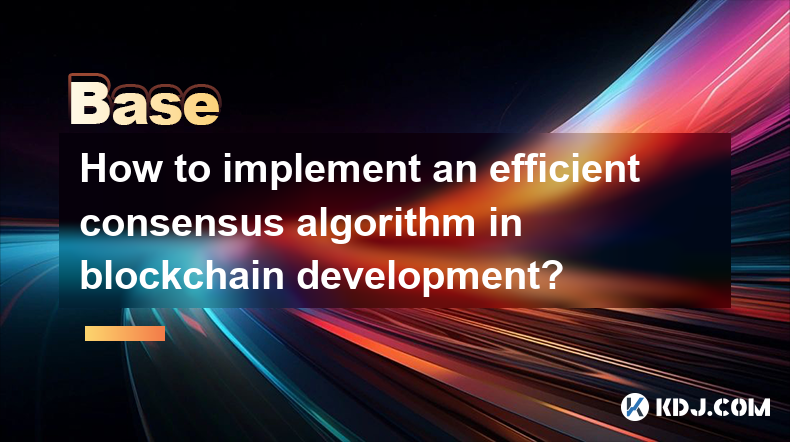
Key Points:
- Understanding the trade-offs between different consensus mechanisms (Proof-of-Work, Proof-of-Stake, etc.) is crucial for efficient blockchain development.
- Choosing the right algorithm depends on the specific needs and priorities of the blockchain project (e.g., security, scalability, energy consumption).
- Efficient implementation requires careful consideration of data structures, network communication protocols, and cryptographic techniques.
- Optimization techniques, such as sharding and layer-2 scaling solutions, can significantly improve the performance of a blockchain network.
- Security considerations are paramount and must be addressed throughout the development process.
How to Implement an Efficient Consensus Algorithm in Blockchain Development?
Choosing the right consensus mechanism is paramount in blockchain development. The efficiency of your blockchain hinges heavily on this decision. Different algorithms offer varying levels of security, scalability, and energy consumption. Understanding these trade-offs is essential before beginning implementation.
Proof-of-Work (PoW), popularized by Bitcoin, prioritizes security through computationally intensive mining. However, its high energy consumption and scalability limitations are well-documented. Ethereum's transition to Proof-of-Stake (PoS) exemplifies a shift towards more energy-efficient alternatives.
Proof-of-Stake (PoS) requires validators to stake their cryptocurrency to participate in consensus. This significantly reduces energy consumption compared to PoW. However, PoS systems can be susceptible to attacks if not carefully designed and implemented, particularly 51% attacks. Delegated Proof-of-Stake (DPoS) addresses some of these concerns by allowing token holders to delegate their voting rights to elected representatives.
Other consensus mechanisms exist, including Practical Byzantine Fault Tolerance (PBFT), which is well-suited for smaller, private blockchains. It offers high throughput and low latency but struggles with scalability in larger networks. Hybrid approaches combining elements of different consensus mechanisms are also being explored to leverage the strengths of each.
Efficient implementation goes beyond algorithm selection. Data structures play a crucial role. Using efficient data structures, such as Merkle trees for data verification, minimizes storage and computational overhead. Network communication is equally important. A well-designed network protocol minimizes latency and maximizes throughput. Careful consideration of network topology and communication protocols is crucial for efficient consensus.
Cryptographic techniques underpin the security and integrity of any blockchain. Choosing secure and efficient cryptographic algorithms is vital. The selection should consider factors like computational cost, security strength, and resistance to known attacks. Regular security audits are essential to identify and address vulnerabilities.
Optimization Techniques:
Several techniques can significantly enhance the efficiency of a blockchain network.
- Sharding: This technique partitions the blockchain into smaller, more manageable shards, allowing for parallel processing of transactions. This improves scalability and throughput significantly.
- Layer-2 Scaling Solutions: These solutions process transactions off-chain, reducing the load on the main blockchain. Examples include state channels, sidechains, and rollups. These solutions offer scalability without compromising the security of the main chain.
- Optimized Data Structures: Using efficient data structures like Merkle trees and Bloom filters can drastically reduce storage and computational requirements.
- Efficient Consensus Protocols: Careful implementation and optimization of the chosen consensus algorithm are critical. This includes minimizing communication overhead and optimizing cryptographic operations.
Implementation Steps:
Implementing a consensus algorithm involves several steps:
- Design and Specification: Clearly define the requirements, including security, scalability, and energy efficiency goals. Choose a suitable consensus algorithm.
- Protocol Implementation: Develop the network protocol for communication between nodes. This includes message formats and handling mechanisms.
- Data Structure Implementation: Implement efficient data structures like Merkle trees and hash tables for data storage and verification.
- Cryptography Integration: Integrate secure cryptographic primitives for digital signatures, hashing, and encryption.
- Testing and Validation: Thoroughly test the implementation to ensure correctness, security, and efficiency.
Security Considerations:
Security is paramount. A poorly secured blockchain is vulnerable to various attacks.
- 51% Attacks: These attacks occur when a single entity controls more than 50% of the network's hashing power (PoW) or stake (PoS). Mitigation strategies involve designing robust consensus protocols and mechanisms to deter malicious actors.
- Sybil Attacks: These involve creating multiple fake identities to gain undue influence on the network. Solutions include reputation systems and identity verification mechanisms.
- Double-Spending Attacks: These involve spending the same cryptocurrency twice. Strong consensus mechanisms and efficient transaction validation prevent these attacks.
- Smart Contract Vulnerabilities: If the blockchain utilizes smart contracts, securing them against vulnerabilities is crucial. Regular audits and rigorous testing are essential.
Common Questions:
Q: What is the most efficient consensus algorithm?
A: There is no single "most efficient" algorithm. The best choice depends on the specific needs of the blockchain project, balancing security, scalability, and energy consumption. PoS generally offers better energy efficiency than PoW, but PoW might be preferred for its established security track record in some contexts.
Q: How can I improve the throughput of my blockchain?
A: Implement sharding, layer-2 scaling solutions, optimize data structures, and carefully tune the consensus algorithm. Network optimization and efficient communication protocols are also crucial.
Q: What are the security risks associated with implementing a consensus algorithm?
A: The major risks include 51% attacks, Sybil attacks, double-spending attacks, and vulnerabilities in smart contracts (if applicable). Robust design, rigorous testing, and regular security audits are essential to mitigate these risks.
Q: What programming languages are best suited for blockchain development?
A: Many languages are used, including but not limited to: Solidity (for Ethereum smart contracts), Go (for high-performance applications), Rust (for its memory safety), and C++ (for its performance and control). The choice often depends on the specific needs of the project and the developer's expertise.
Disclaimer:info@kdj.com
The information provided is not trading advice. kdj.com does not assume any responsibility for any investments made based on the information provided in this article. Cryptocurrencies are highly volatile and it is highly recommended that you invest with caution after thorough research!
If you believe that the content used on this website infringes your copyright, please contact us immediately (info@kdj.com) and we will delete it promptly.
- Altcoin Alert: Binance Listings and the Wild West of Crypto
- 2025-07-03 14:30:11
- Decentralized Stablecoins in 2025: Challenging Centralized Counterparts?
- 2025-07-03 14:30:11
- Meme Coin Mania: Is BTC Bull the Next Big Thing in a Limited Time BTC Bull Run?
- 2025-07-03 12:30:11
- Bitcoin Soars to $109,000: What's Fueling the Crypto Rally?
- 2025-07-03 10:30:13
- Hong Kong: Racing to Be the World's Tokenization Hub
- 2025-07-03 14:50:11
- Splatterhouse Rocks Retro Scene: A UK Magazine Deep Dive
- 2025-07-03 12:30:11
Related knowledge

What is open interest in derivatives?
Jul 03,2025 at 02:49pm
Understanding Open Interest in DerivativesOpen interest is a critical metric used in the cryptocurrency derivatives market, particularly when analyzing futures and options contracts. It represents the total number of outstanding contracts that have not been settled or closed by either party involved. Unlike trading volume, which counts all trades made i...
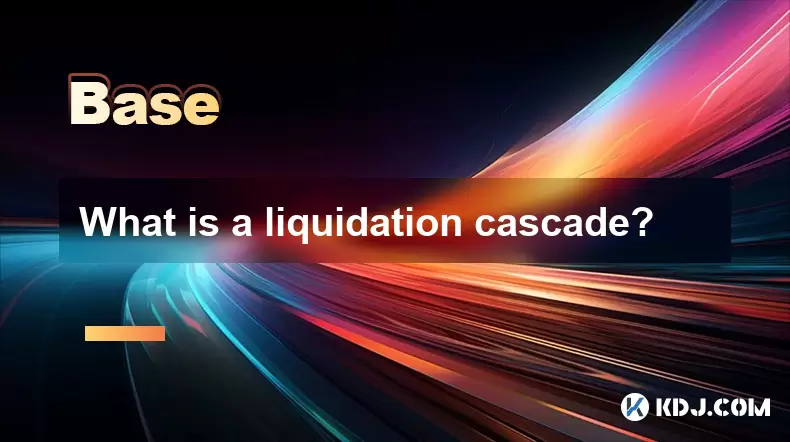
What is a liquidation cascade?
Jul 03,2025 at 07:15am
Understanding the Concept of LiquidationIn the realm of cryptocurrency trading, liquidation refers to the process by which a trader's position is automatically closed due to insufficient funds to maintain the leveraged trade. This typically occurs when the market moves against the trader's position and their account equity falls below the required maint...
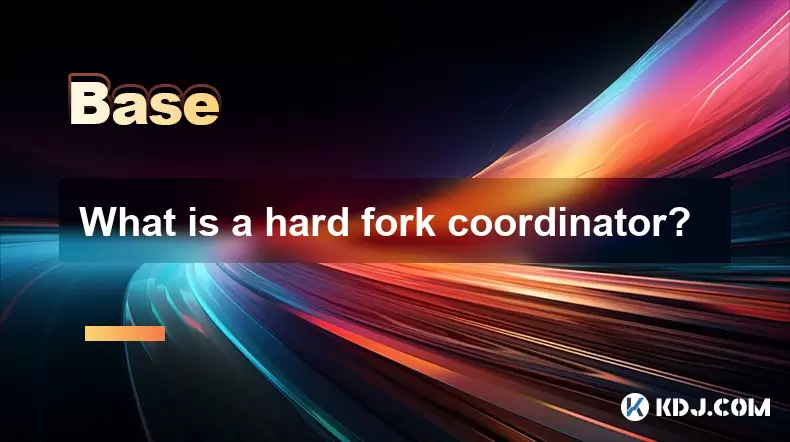
What is a hard fork coordinator?
Jul 03,2025 at 12:42pm
Understanding the Role of a Hard Fork CoordinatorIn the world of blockchain and cryptocurrencies, a hard fork coordinator plays a critical role during major network upgrades. A hard fork is a significant change to a blockchain’s protocol that makes previously invalid blocks or transactions valid (or vice versa). This type of upgrade requires all nodes o...
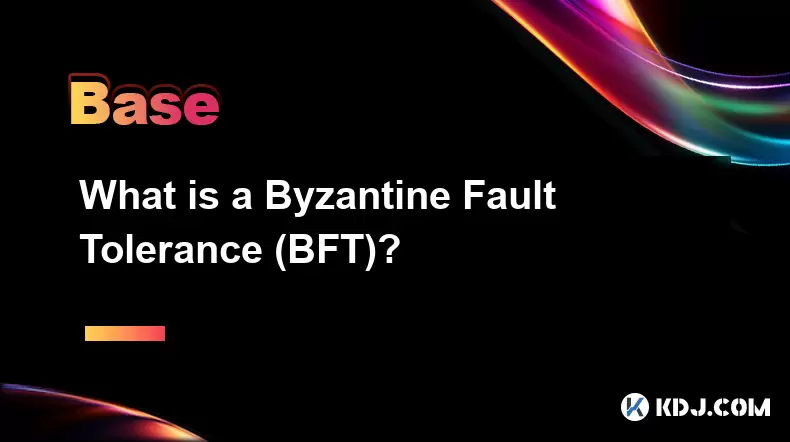
What is a Byzantine Fault Tolerance (BFT)?
Jul 03,2025 at 11:49am
Understanding the Concept of Byzantine Fault ToleranceByzantine Fault Tolerance (BFT) is a critical concept in distributed systems, particularly within the realm of blockchain technology and cryptocurrencies. It refers to the ability of a system to continue functioning correctly even when some components fail or behave maliciously. The term originates f...
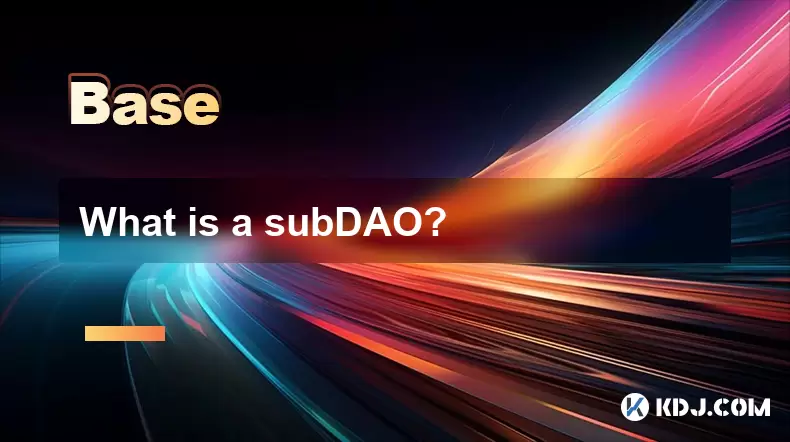
What is a subDAO?
Jul 03,2025 at 09:36am
Understanding the Concept of SubDAOA SubDAO, short for Sub-Decentralized Autonomous Organization, is a specialized entity that operates under the umbrella of a larger DAO (Decentralized Autonomous Organization). It functions with its own set of rules, governance mechanisms, and tokenomics while remaining aligned with the overarching goals of the parent ...

What is the Travel Rule in crypto?
Jul 03,2025 at 10:28am
Understanding the Travel Rule in CryptocurrencyThe Travel Rule is a regulatory requirement initially introduced by the Financial Action Task Force (FATF) for traditional financial institutions. It has since been extended to cryptocurrency transactions, especially those involving Virtual Asset Service Providers (VASPs). The core purpose of this rule is t...

What is open interest in derivatives?
Jul 03,2025 at 02:49pm
Understanding Open Interest in DerivativesOpen interest is a critical metric used in the cryptocurrency derivatives market, particularly when analyzing futures and options contracts. It represents the total number of outstanding contracts that have not been settled or closed by either party involved. Unlike trading volume, which counts all trades made i...

What is a liquidation cascade?
Jul 03,2025 at 07:15am
Understanding the Concept of LiquidationIn the realm of cryptocurrency trading, liquidation refers to the process by which a trader's position is automatically closed due to insufficient funds to maintain the leveraged trade. This typically occurs when the market moves against the trader's position and their account equity falls below the required maint...

What is a hard fork coordinator?
Jul 03,2025 at 12:42pm
Understanding the Role of a Hard Fork CoordinatorIn the world of blockchain and cryptocurrencies, a hard fork coordinator plays a critical role during major network upgrades. A hard fork is a significant change to a blockchain’s protocol that makes previously invalid blocks or transactions valid (or vice versa). This type of upgrade requires all nodes o...

What is a Byzantine Fault Tolerance (BFT)?
Jul 03,2025 at 11:49am
Understanding the Concept of Byzantine Fault ToleranceByzantine Fault Tolerance (BFT) is a critical concept in distributed systems, particularly within the realm of blockchain technology and cryptocurrencies. It refers to the ability of a system to continue functioning correctly even when some components fail or behave maliciously. The term originates f...

What is a subDAO?
Jul 03,2025 at 09:36am
Understanding the Concept of SubDAOA SubDAO, short for Sub-Decentralized Autonomous Organization, is a specialized entity that operates under the umbrella of a larger DAO (Decentralized Autonomous Organization). It functions with its own set of rules, governance mechanisms, and tokenomics while remaining aligned with the overarching goals of the parent ...

What is the Travel Rule in crypto?
Jul 03,2025 at 10:28am
Understanding the Travel Rule in CryptocurrencyThe Travel Rule is a regulatory requirement initially introduced by the Financial Action Task Force (FATF) for traditional financial institutions. It has since been extended to cryptocurrency transactions, especially those involving Virtual Asset Service Providers (VASPs). The core purpose of this rule is t...
See all articles

























































































